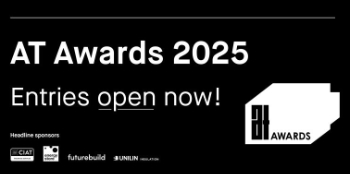How to evaluate the business potential of an exhibition

|

|
Contents |
[edit] Why exhibiting would be part of your marketing plan
Exhibitions can be used for:
- New business generation
- Brand reputation
- Brand awareness
- Insight
Exhibiting offers companies the opportunity to engage large numbers of potential prospects and draw them into their own customer funnel, via the organisers marketing program and the exhibition stand.
Prospects can experience and assess a company’s product first hand and talk face to face with the sales team to build rapport, and trust. Something that is difficult to achieve with other communication channels.
Most exhibitions offer educational programs where exhibitors can participate and build their brand reputation.
Exhibitions can be a great place to see first hand the reaction of potential buyers to your product. This can provide great insight for the creation of communications and product development.
[edit] Choosing an exhibition
Exhibiting requires some investment from the marketing budget and therefore it is important to choose and evaluate the potential of each exhibition so you can prioritise them. You can also then compare the projected outcomes to other marketing tactics.
The primary reason to exhibit is to help the company increase business. Therefore the first thing to look at when choosing a potential exhibition is the audience profile, and how closely it matches the company’s target audience(s).
The exhibition organiser should be able to provide a breakdown of the previous year’s visitors, which should provide reasonable figures to use in an evaluation. For new exhibitions, any figures supplied should be treated with caution.
[edit] Evaluating an exhibition
A common way to evaluate the business potential of an exhibition against other exhibitions and marketing tactics is return on investment (ROI).
To calculate ROI there are two questions that need to be answered:
- How much additional revenue is the exhibition likely to generate?
- How much will it cost to participate in the show?
ROI can be calculated as follows:
(Projected revenue-projected costs)/projected costs*100
[edit] Calculating potential revenue
1. Estimate the number of your target audience likely to visit the show
The show organisers should be able to give you a detailed breakdown of likely numbers and categories of visitors. Most likely based on previous years.
You may want to segment the target audience further by size or your personas.
2. Estimate the percentage of target visitors you are likely to engage via show marketing and stand activity
This will give you the number of prospects you will acquire from the show and bring in to your own customer experience program.
This will be an educated estimate. Insight to inform your estimate could be:
Engagement rates from previous shows
The organiser may have some insight on engagement rates
3. Multiply 2 by your conversion rate of engaged visitors to revenue
Here you should be able to use the conversion rate(s) you are used to achieving once you get a prospect into your customer funnel.
If you have further segmented the audience then you may have different conversion rates for each segment.
4. Multiply 3 by the average revenue per customer
If you are taking a long term view then you should use the average lifetime value of a customer. You may have a single average, or you may have different lifetime customer values by segment.
You now have your projected additional revenue as a result of being an exhibitor/partner at the event.
[edit] Calculating the cost of exhibiting
Add up the following costs:
1. Stand space and utilities
This is the physical stand space you book. It can be space only or a shell scheme. The utilities are other services you may have to hire like additional electrics for machines, wifi, monitors, furniture
2. Stand structure and logistics cost
For the cost of the physical stand you should apportion a part of the total cost of purchasing the stand based on the number of times you are likely to use it.
You should also include the cost of any transportation of the stand to and from the exhibition venue and any set-up and breakdown costs.
3. Marketing costs
These should be any marketing costs pre, during and post show. These could be:
- Invitation campaign
- Media advertising
- Social media
- Content creation
- Collateral
- Premiums
- Uniforms
- Samples/stock
4. Travel and accommodation costs
This will include the travel, accommodation and subsistence costs for personnel who are involved setting up and operating the stand on the days of the show.
[edit] Calculating return on investment
You now have the figures to put in the following formula to calculate your ROI for an event.
ROI = Projected revenue – projected costs)/projected costs*100
If you choose to exhibit at the show then this figure becomes your topline objective against which you can evaluate your success post show.
If you have any questions about any aspect of exhibiting then please email here
[edit] Related articles
--Simon Baxter 16:40, 26 Aug 2020 (BST).
Featured articles and news
Editor's broadbrush view on forms of electrical heating in context.
The pace of heating change; BSRIA market intelligence
Electric Dreams, Boiler Realities.
New President of ECA announced
Ruth Devine MBE becomes the 112th President of the Electrical Contractors Association.
New CIAT Professional Standards Competency Framework
Supercedes the 2019 Professional Standards Framework from 1 May 2025.
Difficult Sites: Architecture Against the Odds
Free exhibition at the RIBA Architecture Gallery until 31 May.
PPN 021: Payment Spot Checks in Public Sub-Contracts
Published following consultation and influence from ECA.
Designing Buildings reaches 20,000 articles
We take a look back at some of the stranger contributions.
Lessons learned from other industries.
The Buildings of the Malting Industry. Book review.
Conserving places with climate resilience in mind.
Combating burnout.
The 5 elements of seiri, seiton, seiso, seiketsu and shitsuke.
Shading for housing, a design guide
A look back at embedding a new culture of shading.
The Architectural Technology Awards
The AT Awards 2025 are open for entries!
ECA Blueprint for Electrification
The 'mosaic of interconnected challenges' and how to deliver the UK’s Transition to Clean Power.
Grenfell Tower Principal Contractor Award notice
Tower repair and maintenance contractor announced as demolition contractor.
























